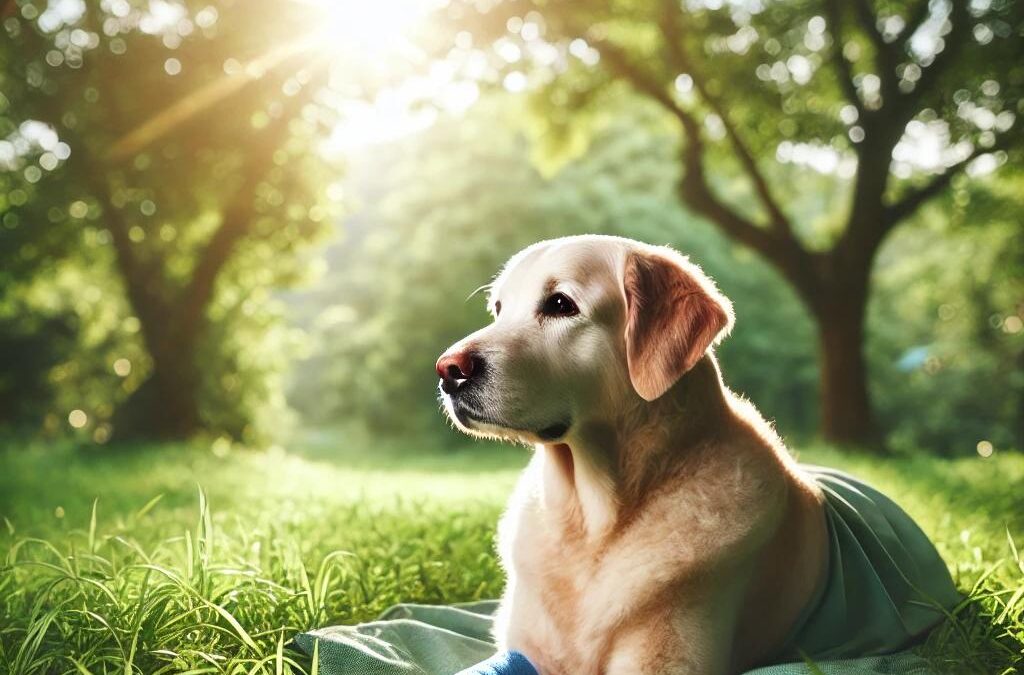Tumores rompidos em cães, especialmente tipos agressivos como tumores de mastócitos, podem ser alarmantes para qualquer dono de animal de estimação. Quando um tumor estoura, pode levar a feridas abertas, sangramento e um risco aumentado de infecção. Entender como cuidar de um cão com um tumor rompido e conhecer medidas preventivas pode ajudar a evitar complicações. Neste artigo, discutiremos as causas comuns de ruptura de tumor, quais ações imediatas tomar e como gerenciar a saúde do seu cão a longo prazo.
Causas de ruptura de tumor em cães
Vários fatores podem levar ao estouro de um tumor em cães. Entender essas causas pode ajudar a minimizar o risco:
- Trauma físico
Cães com tumores, particularmente os grandes, são mais vulneráveis a traumas físicos. Atividades simples como pular, correr ou esfregar-se contra superfícies podem causar a ruptura do delicado tecido tumoral. - Ulceração tumoral
Certos tipos de câncer, como tumores de mastócitos e carcinomas de células escamosas, frequentemente desenvolvem superfícies ulceradas à medida que crescem. A ulceração enfraquece a camada externa do tumor, tornando-o mais suscetível a estourar. - Pressão interna
Conforme os tumores crescem, eles às vezes causam pressão interna nos tecidos e vasos sanguíneos próximos. Essa pressão pode enfraquecer a estrutura do tumor, eventualmente levando a uma ruptura.
Sinais de um tumor rompido
Reconhecer os sinais de um tumor rompido pode ajudar você a responder de forma rápida e apropriada. Alguns sinais comuns incluem:
- Sangramento ou secreção no local do tumor
- Ulceração visível ou ferida aberta
- Inchaço e vermelhidão ao redor do tumor
- Sinais de dor ou desconforto, como choramingar ou mancar
Se você observar algum desses sintomas, é importante fornecer atendimento imediato e procurar assistência veterinária o mais rápido possível.
Passos imediatos a serem tomados quando um tumor estoura
Se o tumor do seu cão se romper, tomar as medidas corretas rapidamente pode prevenir infecção e complicações futuras. Aqui está o que fazer:
- Limpe a ferida
Use uma solução salina estéril ou água limpa para limpar delicadamente o ferimento. Evite usar antissépticos fortes como peróxido de hidrogênio ou álcool, pois eles podem causar mais irritação. - Aplique pressão suave para parar o sangramento
Se o tumor estiver sangrando, aplique pressão suave usando uma gaze ou pano esterilizado para controlar o sangramento. A maioria dos sangramentos menores deve parar em poucos minutos. - Enfaixar a ferida
Após limpar o ferimento e controlar qualquer sangramento, cubra a área com um curativo limpo para protegê-lo de sujeira e bactérias. Certifique-se de trocar o curativo regularmente. - Consult Your Veterinarian
Mesmo que o sangramento pare, um tumor estourado precisa de atenção profissional. Seu veterinário avaliará a ferida, prescreverá antibióticos se necessário e recomendará tratamentos adicionais, como cirurgia ou quimioterapia.
Tratamento e prevenção de longo prazo
Após o atendimento imediato, o gerenciamento de longo prazo é essencial para garantir a saúde do seu cão e evitar rupturas futuras. Dependendo do tipo e estágio do tumor, seu veterinário pode recomendar vários tratamentos:
- Remoção cirúrgica
Se o tumor for localizado, a remoção cirúrgica é frequentemente a melhor opção para evitar crescimento ou ruptura. A cirurgia também pode ajudar a eliminar o risco de infecção de feridas abertas recorrentes. - Quimioterapia ou radioterapia
Para cânceres mais agressivos, quimioterapia ou radioterapia podem ser necessárias para encolher o tumor e desacelerar sua disseminação. Esses tratamentos podem ajudar a reduzir a chance de rupturas futuras ao diminuir o tamanho do tumor. - Suporte Nutricional
Uma dieta saudável rica em nutrientes anti-inflamatórios pode desempenhar um papel de suporte na recuperação do seu cão. Suplementos como ácidos graxos ômega-3, cúrcuma e cogumelos medicinais podem ajudar a impulsionar o sistema imunológico do seu cão e promover a cura. - Medicina Tradicional Chinesa (MTC) para Cuidados de Suporte
Terapias herbais na Medicina Tradicional Chinesa (MTC) podem complementar tratamentos convencionais e ajudar a apoiar a recuperação do seu cão. Ervas como Amor de Sichuan (Chuanxiong) pode promover a circulação sanguínea e reduzir o inchaço, enquanto madressilva (Jin Yin Hua) pode ajudar a aliviar a inflamação e prevenir infecções. Esses remédios naturais podem ajudar a manter o bem-estar do seu cão durante tratamentos de câncer.
Prevenção de futuras rupturas tumorais
Embora nem todas as rupturas tumorais possam ser prevenidas, há medidas que você pode tomar para reduzir o risco:
- Monitore o tumor do seu cão regularmente: Fique de olho no tamanho, textura e aparência do tumor. Relate qualquer alteração ao seu veterinário imediatamente.
- Limite a atividade física: Se o seu cão tiver um tumor grande ou vulnerável, considere restringir atividades que possam causar traumas, como brincadeiras violentas ou longas caminhadas.
- Proteja o local do tumor: Seu veterinário pode sugerir o uso de uma cobertura protetora ou curativo para proteger o tumor de atrito ou impacto.
Um tumor rompido em um cão é um problema médico sério que requer atenção imediata. Ao entender as causas, tomar medidas rápidas quando ocorre uma ruptura e seguir um plano de cuidados abrangente de longo prazo, você pode ajudar seu cão a se recuperar e prevenir complicações futuras. Com a combinação de tratamentos convencionais e terapias de suporte como a Medicina Tradicional Chinesa, seu cão pode manter uma qualidade de vida mais alta enquanto lida com o câncer.















